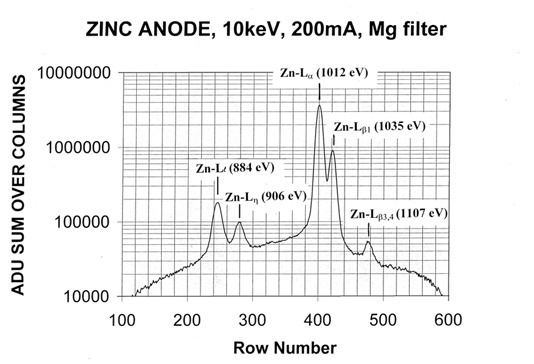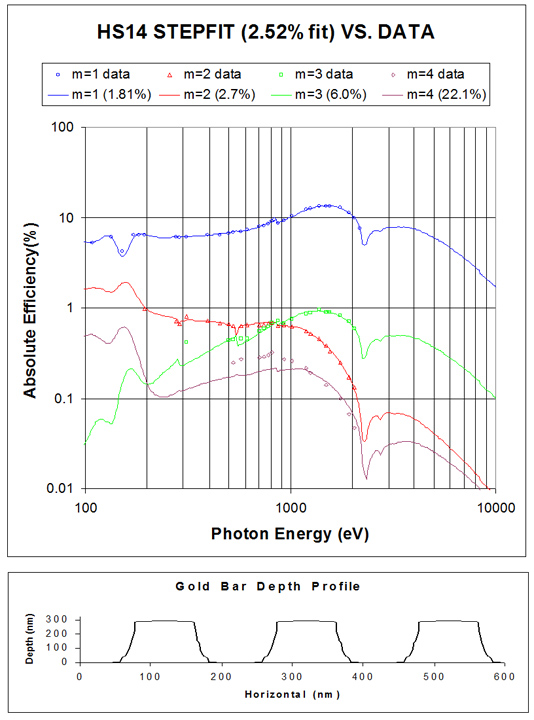These anode cap sets are designed to be used with the Manson electron impact sources1, models 2 and 5. As enumerated in the table, the anode library provides a multitude of characteristic lines from K, L and M-shell transitions, as well as Bremsstrahlung continua. The ability to select spectral lines at closely spaced soft x-ray photon energies allows the calibration of spectral features such as filter absorption edges, multilayer (Bragg) interference reflectance peaks and grating efficiency variations (see Fig. 2) without resorting to the use of a synchrotron radiation facility.
The same anode set fits both model 2 and model 5 Manson sources. As specified for each material in the table, the anode caps are constructed of either a) the metal itself, or b) a base of 303 stainless steel with the impact material affixed to the top using low-outgassing silver conductive epoxy. Each anode cap is vented and, following initial break-in, is compatible with vacuum into the 10-8 mbar range. With the exception of Be, all anode caps are reusable indefinitely by nylon pad cleaning of the anode surface after extended use.
Fig. 1 shows the spectrum produced by one typical anode material (zinc), consisting of several useable characteristic L-shell lines, plus an underlying continuum for the atomic number Z=30. As the Bremsstrahlung strength is highly dependent upon Z, the strongest continuum is obtained using tantalum (Z=73) or tungsten (Z=74). Anode set model CAL-32 comprises the following materials: Be(4), B, C, Sapphire, Mg, Al, Si, Sc, Ti, V, Cr, Mn, Fe, SS303, Co, Ni, Cu, Zn, Ge, Y, Zr, Nb, Mo, Ru,Pd, Ag, Sn, Ta and W); refer to the characteristic emission line table for the available photon energies.
As an option, enhanced cooling of the operating anodes is available, using forced-air fans combined with a copper-block finned radiator. This is found to improve the positional stability of the emission region of the Manson source and stabilize its output intensity through reduced hydrocarbon contamination.

Fig. 1. Spectrum of characteristic lines and Bremsstrahlung continuum from a zinc anode in the Manson model 2 source, using Hettrick SXR-II spectrometer and a CCD detector to record the spectrum.

Fig. 2. Absolute efficiency measurements of a free-standing transmission grating, using numerous characteristic lines from CAL-32 anode library and Hettrick SXR-II monochromator.
1 Manson electron impact sources are manufactured and sold by Austin Instruments, Inc.
website: www.austinst.com
email: austinst@tiac.net
tel: 800-818-7403.